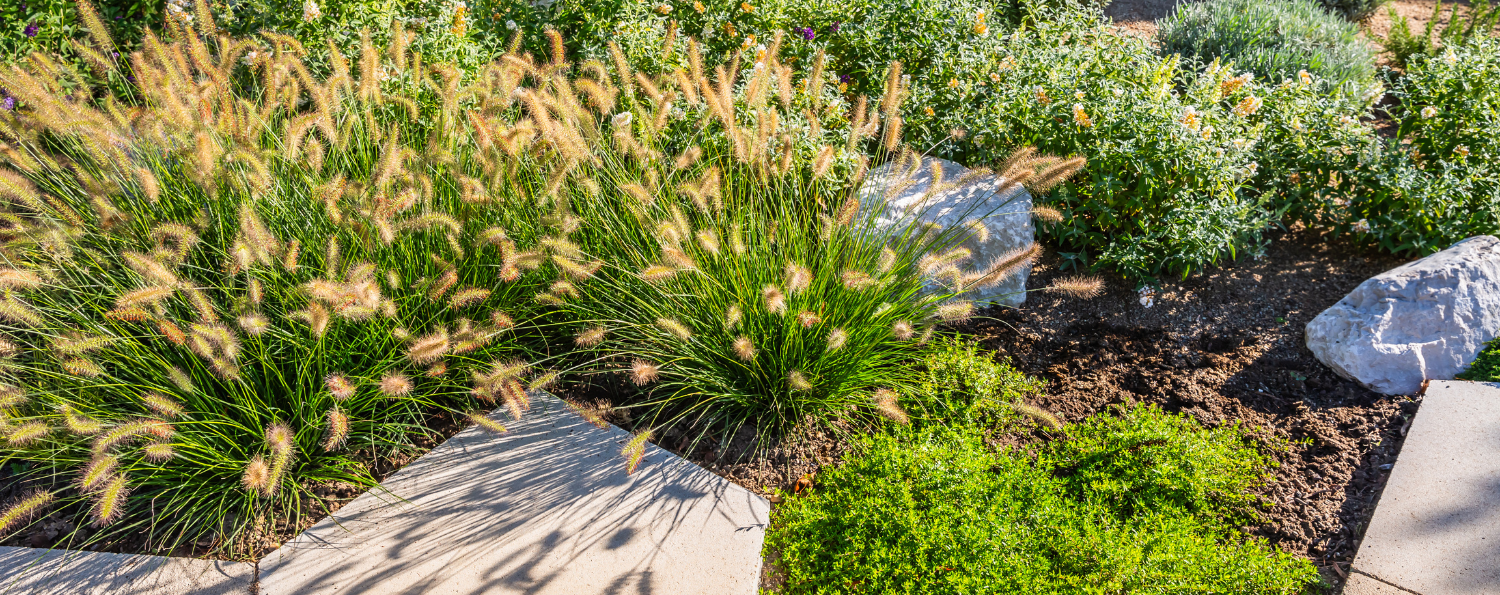
Firewise Landscaping
For those of us living on the West Coast near fire prone areas, it’s important to shift our thinking about how we landscape our yards. The way you treat the defensible zones around your house can make the difference between it catching fire and not, or it being deemed worth defending by firefighters or not.
Last month, the Central Valley Garden Center hosted an event with Napa FireWise to discuss defensible zones, what a fire wise yard looks like, and what plants are best in our environment, including a tour of fire-wise plants available at the Garden Center.
Defensible Zones
Zone 0 – This zone is 0-5' from structures. Here you should remove combustibles surrounding all structures and under and around attached decks. Also cut grass or install hardscaping.
Zone 1 – This zone is 5-30' from structures. Eliminate the connectivity between islands of vegetation by increasing the spacing between trees, removing lower branches of trees and shrubs, and creating areas of irrigated and mowed grass or hardscape between lush vegetation islands. Plants should be properly irrigated and maintained to remove dead/dry material.
Zone 2 – This zone is 30-100' from structures. Here, you should reduce the density of the trees, shrubs, plants, and grasses to slow fire spread and reduce flame heights. Keep shrubs and trees well-spaced and pruned to eliminate fuel ladders, where fire can climb from the ground to the tops of the vegetation.
Most Fire-Resistant Plants for Your Home
Keep these following in mind when selecting plants and maintaining your yard for wildfire safety:
- High-moisture plants that grow close to the ground and have a low sap or resin content are good choices for areas closer to structures. Plants with more waxes, oils, and resins are likely to be more flammable and release more heat energy when they burn; they should be kept far from structures.
- It’s important to keep plants that catch fire easily, burn hot, and/or throw a lot of embers further from your house. Plants with the following qualities present less of these risks:
- Plants with high moisture content
- Plants with easily bent leaves
- Plants with thick leaves
- Plants without fragrance
- Plants with silver or gray leaves
- Plant leaves without hair
- Plants that do not shed bark or branches (accumulate less fuel at the base and require less maintenance)
- Plants that are regularly watered reduce dead leaves and duff production.
- Large, regularly maintained green trees and shrubs (without dead branches and clusters of dead leaves) can act as a shield against flying embers. For example, Coast Live Oaks perform this function well.
Native Plants are a Great Choice
Also, while not necessarily critical to a fire wise yard, we like to encourage the inclusion of native plants in landscaping. They’re better adapted to our local climate, support biodiversity, and tolerate our rainfall patterns and drought well. Non-natives are good choices, too, though we do discourage picking invasive species.
Some great native plants are:
- Yarrow
- California fuchsia
- Western redbud
- California coffeeberry
- California lilac ceanothus
- Any native succulent
- Rushes, sedges, native bunch grasses
- Penstemon
- Milk Weed
- Manzanita



